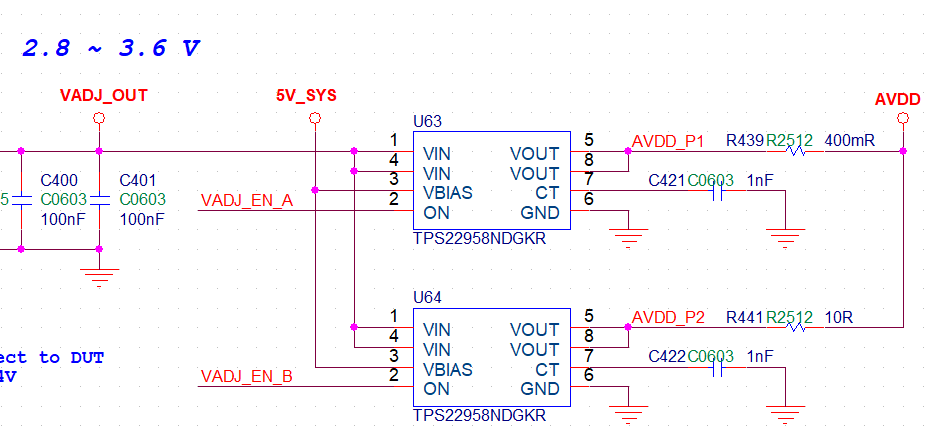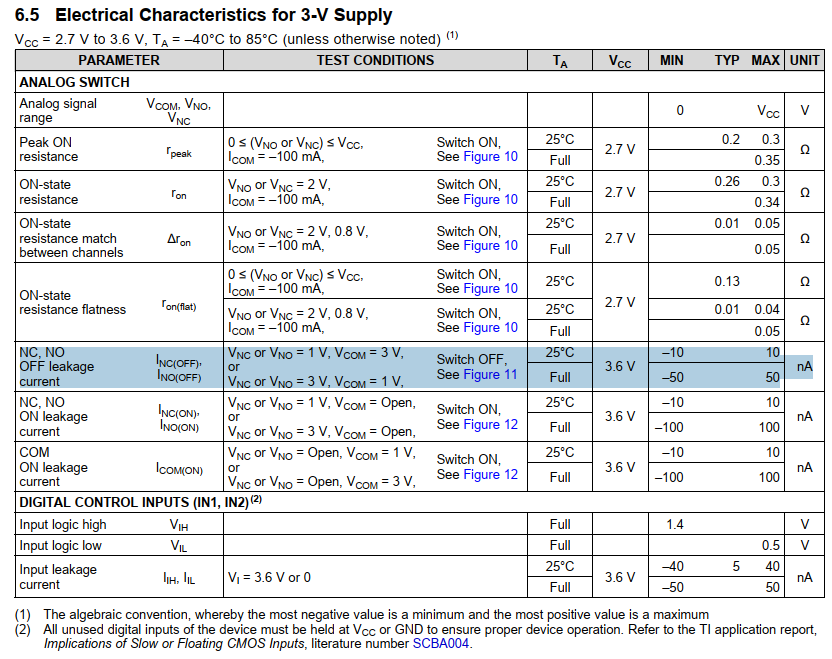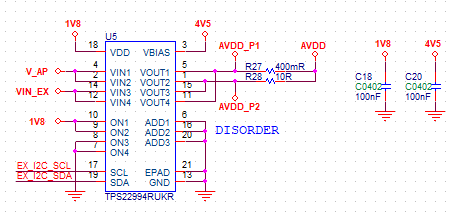Other Parts Discussed in Thread: TS3A24159, , TPS22994
I am designing a DMM, using TPS22958N to switch the current shunt resisters. I have several questions:
1. when <enable U64 / disable U63 / no load attached> , how much leak current flowing from AVDD_P2-->AVDD-->AVDD_P1-->VOUT(U63) ?
2. TS3A24159 has very little leak current, but don't have enough On-State switch current, Is there any better recommandation?





